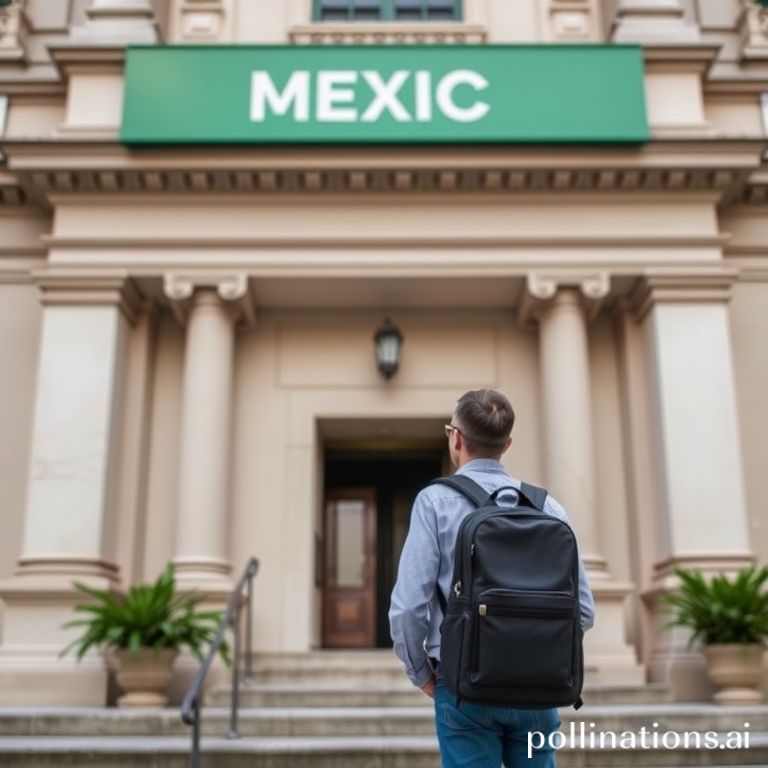Mexico, with its vibrant culture, stunning landscapes, and welcoming atmosphere, has become an increasingly popular destination for expats, digital nomads, and retirees. Whether you’re planning an extended stay, purchasing property, or starting a business, one of the first practical steps you’ll need to take is opening a bank account. While the process might seem daunting at first, understanding the requirements and navigating the system will make it a smooth and efficient experience.
This article provides a comprehensive guide to opening a bank account in Mexico as a foreigner, covering the essential documents, types of accounts, and helpful tips to ensure a successful application. We’ll walk you through everything you need to know to manage your finances with ease while enjoying your life in Mexico.
Why Open a Bank Account in Mexico?
There are several compelling reasons to open a bank account in Mexico, even if you already have accounts in your home country. Convenience is a major factor. Paying bills, receiving payments, and managing your daily expenses becomes significantly easier with a local bank account. It eliminates the need for constant currency conversions and minimizes international transaction fees, which can quickly add up.
Furthermore, having a bank account in Mexico can be crucial for various legal and administrative processes, such as renting an apartment, purchasing property, or obtaining certain visas. It demonstrates financial stability and integration into the Mexican economy, which can be beneficial for your long-term plans.
Essential Documents for Opening an Account
The specific documents required can vary slightly between banks, but generally, you will need the following:
- Passport: Your original passport is the primary form of identification.
- Visa or Immigration Document: Depending on your residency status, you will need to provide a copy of your visa (e.g., tourist visa, temporary resident visa, or permanent resident visa).
- Proof of Address: This can be a utility bill (electricity, water, or phone) in your name or a rental agreement. If the bill is not in your name, you may need a letter from the homeowner or landlord confirming your residence.
- CURP (Clave Única de Registro de Población): If you are a temporary or permanent resident, you will have a CURP, which is a unique identification number.
- Tax ID Number (RFC): While not always required initially, some banks may ask for your RFC (Registro Federal de Contribuyentes), especially if you plan to conduct business transactions.
- Initial Deposit: Be prepared to make an initial deposit to activate your account. The amount varies depending on the bank and the type of account.
Choosing the Right Type of Account
Mexican banks offer a variety of accounts tailored to different needs. Here are some common options:
- Checking Account (Cuenta de Cheques): This is a standard account for day-to-day transactions, bill payments, and ATM withdrawals.
- Savings Account (Cuenta de Ahorro): Ideal for saving money and earning interest. Interest rates in Mexico are generally higher than in many developed countries.
- Investment Account (Cuenta de Inversión): For those interested in investing in Mexican stocks, bonds, or other financial instruments.
- Business Account (Cuenta Empresarial): If you are running a business in Mexico, you will need a business account to manage your company’s finances.
Tips for a Smooth Application Process
- Research Different Banks: Compare the fees, services, and requirements of various banks. Popular banks in Mexico include Banorte, BBVA, Santander, and Citibanamex.
- Visit the Bank in Person: While some banks may offer online applications, it’s generally easier to open an account in person, especially if you don’t speak fluent Spanish.
- Bring All Required Documents: Ensure you have all the necessary documents to avoid delays. It’s always a good idea to bring extra copies.
- Be Prepared to Answer Questions: The bank may ask you about your reasons for opening the account, your source of income, and your intended use of the funds.
- Consider Hiring a Translator: If you’re not comfortable communicating in Spanish, consider hiring a translator to assist you during the application process.
Understanding Banking Fees and Regulations
Be aware of the various fees associated with banking in Mexico. These can include monthly maintenance fees, transaction fees, ATM withdrawal fees (especially at ATMs not affiliated with your bank), and fees for international transfers. Read the fine print and understand the fee structure before opening your account.
Mexico has strict banking regulations to prevent money laundering and other illicit activities. Be prepared to provide detailed information about large deposits or withdrawals. Failure to comply with these regulations could result in your account being frozen or closed.
Conclusion
Opening a bank account in Mexico as a foreigner is a crucial step toward establishing yourself and managing your finances effectively. By understanding the required documents, choosing the right type of account, and following the tips outlined in this guide, you can navigate the process with confidence. With a local bank account, you’ll be well-equipped to enjoy all that Mexico has to offer, from its vibrant culture to its stunning landscapes.
If you found this guide helpful, share it with your fellow expats and digital nomads! Explore our other articles on Life in Mexico for more valuable tips and insights.
IMAGE: A brightly lit, modern bank interior in Mexico. A friendly bank employee smiles and assists a customer (a foreigner) at a desk. The bank’s logo is visible in the background. The overall mood is welcoming and professional. Warm, inviting colors are used.


